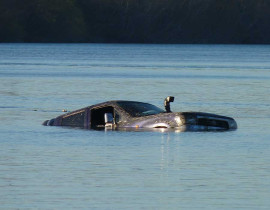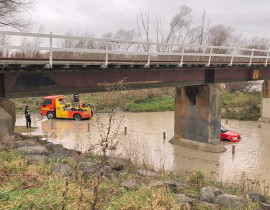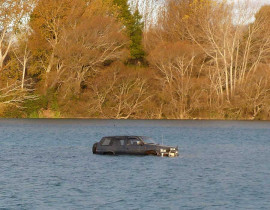
Summer safety alert: Beware of rising river levels and unpredictable weather
The summer season is when swarms of Cantabrians take to our rivers and lakes for fishing, swimming, four-wheel driving, camping and exploring.
This time of the year is when some summer weather patterns can catch people off guard and leave them stranded as a result of rising river levels.
With the National Institute of Water and Atmospheric Research (NIWA) last month declaring the official arrival of El Niño – a naturally occurring global climate cycle expected to result in stronger or more frequent winds and rain in the west this summer – it's even more important to stay vigilant.
No matter what you’re doing in or around our rivers this summer season, be aware of weather forecasts and, if in doubt, keep out.
Weather patterns impact on rivers
The strong, hot, dry wind of Canterbury’s infamous nor-westers usually means heavy rain in the upper reaches of our alpine rivers such as Waiau Uwha, Hurunui, Waimakariri, Rakaia, Rangitata, Waitaki (and Waitaki Lakes) and Ahuriri.
This kind of rain has a significant impact on what’s happening in our local waterways, flood controller Nick Griffiths says.
"The northwest conditions that generate rain in the alpine parts of these large catchments catch many people out – they cause hot and sunny weather on the plains, coupled with rapidly rising river levels and the potential for these waterways to flood with very little warning," Nick says.
The wide riverbeds and braided nature of these rivers also mean that river users can enjoy a dry area of the riverbed without realising that braided flow channels that were dry, or that they may have forded easily when travelling to their spot on the river, have now risen behind them, preventing them from safely exiting the riverbed later in the day.
Incidents alongside the Waimakariri
From vehicles getting stranded to being washed completely downstream, Regional Park Field Ranger Quentin Garlick has seen it all working alongside the Waimakariri River, the region’s most heavily used river for recreation.
This year we’ve already seen five people trapped on the roof of their vehicle in the Waimakariri, resulting in a Westpac rescue helicopter rescue mission. In a previous year, Quentin recalls a day when three different vehicles got stuck.
"It can be a perfectly sunny day and there’s no water at all coming down the river when suddenly it floods," Quentin says.

At this time of year, vehicles regularly get stranded and are sometimes washed downstream

A vehicle being rescued after becoming trapped in rising water

In norwesterlies, flow channels that were low or dry can rise quickly, preventing people from safely exiting the riverbed
Check the weather before you go
"It can happen so quickly. The problem is that people aren’t checking weather conditions in the mountains before they rock on down to the river!"
He urges people to check the river flow data and flood warnings on our social media and to be on the lookout for orange flood warning signs when they’re spending time at the river over the summer months.
If there is a nor-west blowing or even a small amount of flooding, Quentin’s advice is simple – stay away!
"Sometimes we get several groups of people going onto riverbeds in flood. That’s a dangerous idea – if it’s a fast flood, there’s no way you could get everyone off the riverbed before it all turns to chaos," he says.
"Cars can be washed right off the riverbed and putting yourself in harm’s way by entering flood waters puts others at risk who might try to help you when you get into trouble."
View current information about hazards and navigation safety events in the Canterbury region.
